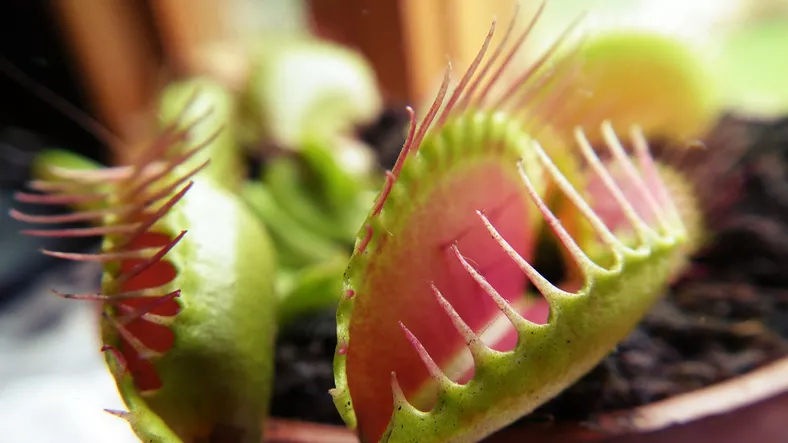Many people even describe these fascinating plants as uncanny roommates. We have already reported on these exotic plant species in a number of articles in the Garden Journal. For flies and many other insects, such a perch near the marsh pitcher, dew leaf, butterwort and, of course, the Venus flytrap is the least favorable place imaginable.
 Carnivorous plants like the Venus Trap are fascinating
Carnivorous plants like the Venus Trap are fascinating
Once the highly sensitive insides of the leaves and tactile bristles have been stimulated, the plants will usually not hesitate and close down. The trap fills up fairly quickly with a fast-acting digestive secretion that will gradually convert trapped victims to liquid fertilizer.
If you look at this natural spectacle for the first time without being familiar with this extraordinary plant species beforehand, you will see the previously clearly drawn distinction between the plant and animal kingdoms blurred. Nevertheless, very few people have the opportunity to observe the destructive activity of these bizarre plants in the wild. It may be the exotic appearance of the plants, curiosity or even a tingling scary effect that more and more people are bringing these little green monsters to their windowsill to admire - some even as a substitute for pets. With good care, plenty of light and the highest possible humidity, there are good chances in your living room to successfully breed the sophisticated insect catchers from the botanical genus of carnivores.
Care of the green carnivores
For smaller plants, glass jars with a slightly larger belly, which work similar to a greenhouse, are best. It is therefore safest to grow larger specimens in a mini greenhouse on the windowsill, but NEVER placed directly above the radiator. A lighted terrarium is a little more elegant. Light is one of the most important growth factors for these exotic species, as otherwise disproportionately long shoots that are not particularly attractive could develop. Furthermore, only completely lime-free water may be used for watering. Ideal if it comes from the rain barrel or if filtered tap water is used. Fertilizing is totally taboo! When buying the substrate, an unfertilized mixture of quartz sand (€15.85) and peat would be optimal, as the carnivores prefer it to be slightly acidic, low in nutrients, but evenly and sufficiently moist. A special feature still applies to the winter, because during this time temperatures between five and fifteen degrees, but also with good brightness, are completely sufficient. The question remains: where are these plants found?
Fangblatt carnivorous plants
We found a very attractive selection of these exotic rarities in the Fangblatt online shop. Even if there are only a few specimens left or even sold out for some species, the colorful offers come from an experienced breeder with 20 years of experience. In addition to various starter sets from "Little Hunger" to "Wolverine" and "Insatiable" we found the following varieties, among others, at the time the November News went to press:
- Sarracenia Alanta: green or reddish to black catching leaves, which grow to a height of 30 cm in a 9-pot with flowering capacity for 24.00 euros;
- Sarracenia Flava: easy to cultivate for beginners with light green or light yellow tubes; hardy, robust and later up to 50 cm high for 14.99 euros/9 square pot;
- Sarracenia Minor: hardy pitcher plant with its very own catching technique and green catching leaves and green/white flowers in a 9-piece square pot for 49.99 euros;
- Drosera Binata: grows up to 40 cm high and is suitable for bog beds; in two sizes in 9 or 12 round pots for 4.99 euros (size M) or 14.99 euros (size L);
- Heliamphora ("The Swamp Pitcher"): the diva among the carnivores with the typical nodding, small flap that can also be outdoors in summer; Price for the 7 to 10 cm high 9-piece round pot: 15.99 euros.